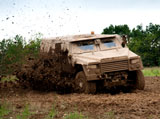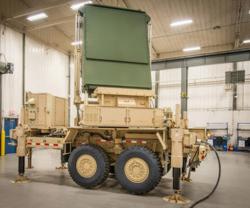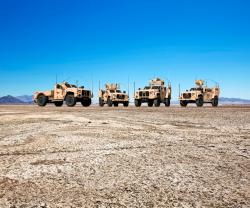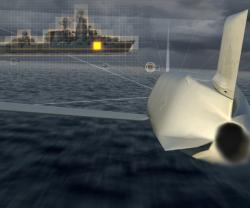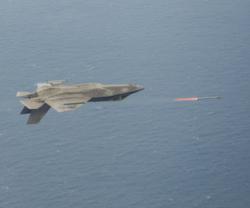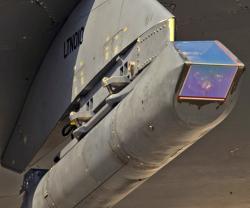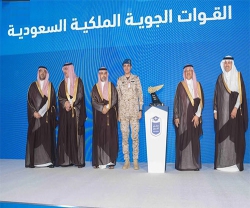Lockheed Martin's JLTV Passes Blast Tests
10.10.2011 Security
Recent government blast tests demonstrated that Lockheed Martin's Joint Light Tactical Vehicle (JLTV) meets protection standards for IED-protected vehicles, while weighing approximately 40% less than other all-terrain models deployed in theater.
Lockheed Martin's JLTV succeeded in its blast tests, which used explosions commonly tested against many existing mine-resistant fleet vehicles.
"Our improved v-hull design is demonstrating its merit, having now surpassed Technology Development protection targets set by our customer," said Scott Greene, Vice President of Ground Vehicles in Lockheed Martin's Missiles and Fire Control business. "Our team has produced a remarkable family of vehicles that strikes the right balance between weight and force protection."
The results verified Lockheed Martin's JLTV can protect soldiers from powerful blasts and still be transported by vertical lift, a new mobility option for the Army and Marines at this protection level. Previous U.S. Army and Marine Corps tests showed JLTV can be transported by CH-47 and CH-53 helicopters.
"In addition to being helo-transportable and mine-resistant, our JLTV design also brings another important advantage to the battlefield: improved mobility. Its lightweight, agile design will help soldiers to evade enemies and avoid threats," Greene said.
The government results mirrored Lockheed Martin's company-funded blast tests on its improved vehicle design. The Engineering and Manufacturing Development (EMD) vehicles feature evolutions in cab size and more affordable component materials.
Separate from those above-threshold tests, Lockheed Martin conducted over 20 blast and 200 ballistic component tests before Technology Development started.
"We anticipated blast protection requirements would increase for the EMD phase of the JLTV program, and we designed for it," said Kathryn Hasse, JLTV Program Director in Lockheed Martin's Missiles and Fire Control business. "We are acutely focused on providing enhanced force protection, performance and payload in an affordable vehicle system."
Lockheed Martin is pursuing the JLTV program, a joint services effort to return advanced mobility, protection and payload to deployed troops by replacing and complementing the aging High Mobility Multipurpose Wheeled Vehicle (Humvee) fleet. The JLTV program creates a common family of vehicles consisting of the Combat Tactical Vehicle and Combat Support Vehicle, both with multiple variants and associated companion trailers.
Lockheed Martin's JLTV succeeded in its blast tests, which used explosions commonly tested against many existing mine-resistant fleet vehicles.
"Our improved v-hull design is demonstrating its merit, having now surpassed Technology Development protection targets set by our customer," said Scott Greene, Vice President of Ground Vehicles in Lockheed Martin's Missiles and Fire Control business. "Our team has produced a remarkable family of vehicles that strikes the right balance between weight and force protection."
The results verified Lockheed Martin's JLTV can protect soldiers from powerful blasts and still be transported by vertical lift, a new mobility option for the Army and Marines at this protection level. Previous U.S. Army and Marine Corps tests showed JLTV can be transported by CH-47 and CH-53 helicopters.
"In addition to being helo-transportable and mine-resistant, our JLTV design also brings another important advantage to the battlefield: improved mobility. Its lightweight, agile design will help soldiers to evade enemies and avoid threats," Greene said.
The government results mirrored Lockheed Martin's company-funded blast tests on its improved vehicle design. The Engineering and Manufacturing Development (EMD) vehicles feature evolutions in cab size and more affordable component materials.
Separate from those above-threshold tests, Lockheed Martin conducted over 20 blast and 200 ballistic component tests before Technology Development started.
"We anticipated blast protection requirements would increase for the EMD phase of the JLTV program, and we designed for it," said Kathryn Hasse, JLTV Program Director in Lockheed Martin's Missiles and Fire Control business. "We are acutely focused on providing enhanced force protection, performance and payload in an affordable vehicle system."
Lockheed Martin is pursuing the JLTV program, a joint services effort to return advanced mobility, protection and payload to deployed troops by replacing and complementing the aging High Mobility Multipurpose Wheeled Vehicle (Humvee) fleet. The JLTV program creates a common family of vehicles consisting of the Combat Tactical Vehicle and Combat Support Vehicle, both with multiple variants and associated companion trailers.
Previous PostGeneral Dynamics Wins 2 US Army Contracts
Latest news
Latest events
DefenPol China2025 - 7th Guangzhou International Defense & Police Exhibition & Summit
11 - 12 Jul 2025Nan Fung International Convention & Exhibition Center (NICEC) - ChinaIDEF 2025 Turkey - International Defence Industry Fair
22 - 27 Jul 2025Istanbul Expo Center - TurkeyDSEI 2025
09 - 12 Sep 2025Excel, London - United KingdomIntersec Saudi Arabia
29 Sep - 01 Oct 2025Riyadh International Exhibition & Convention Centre - Saudi Arabia

